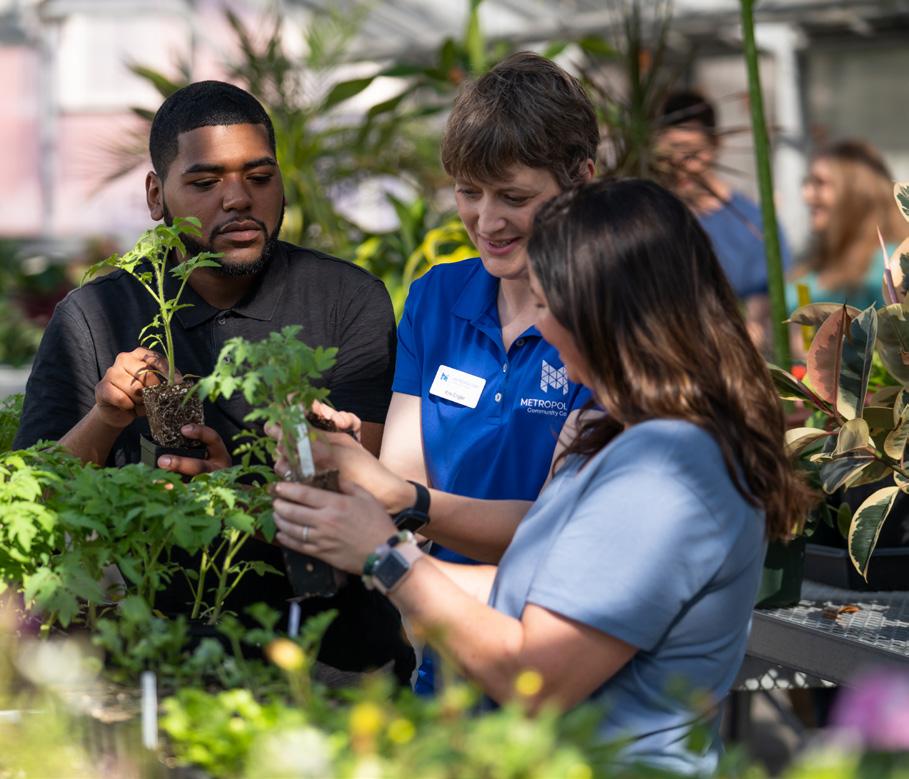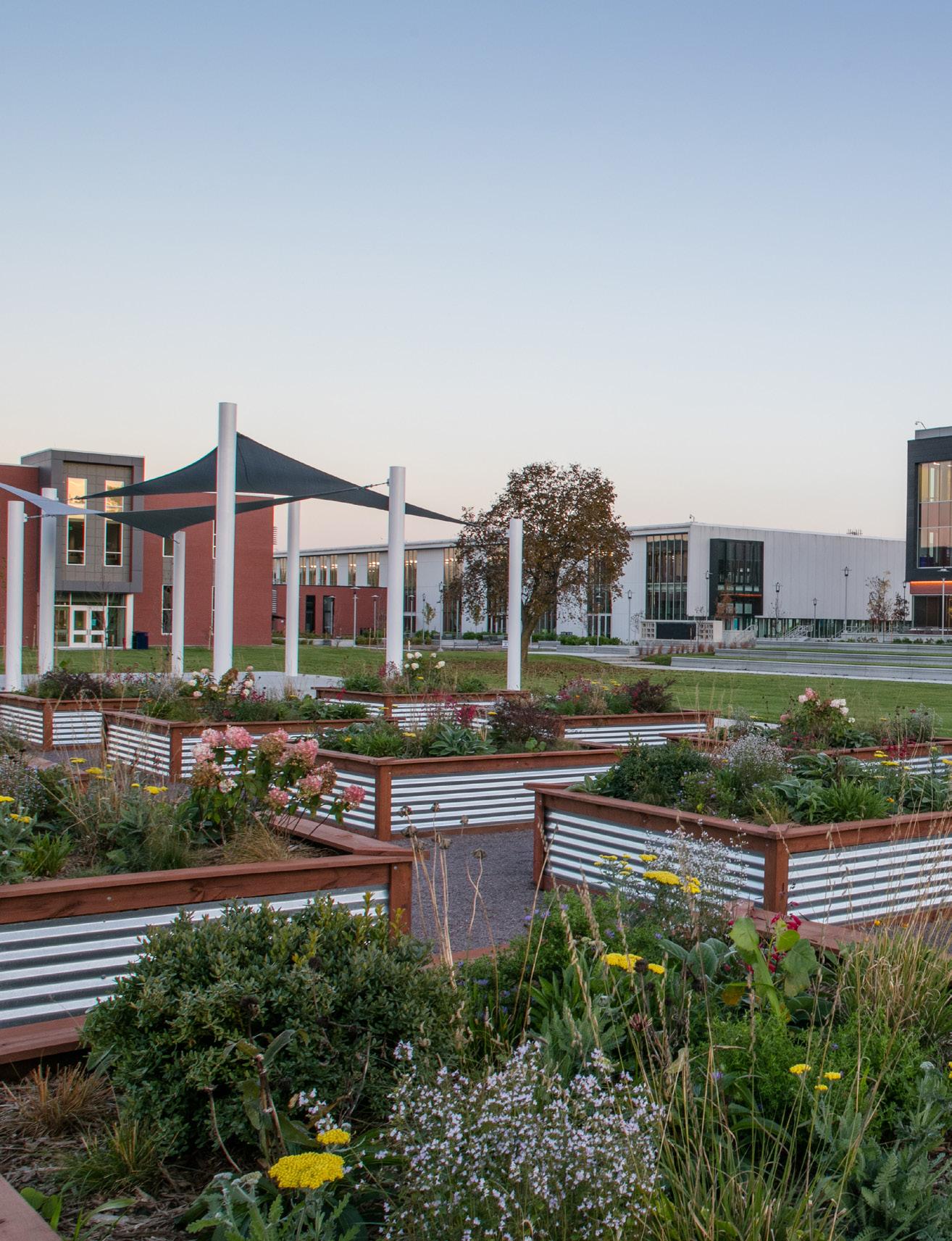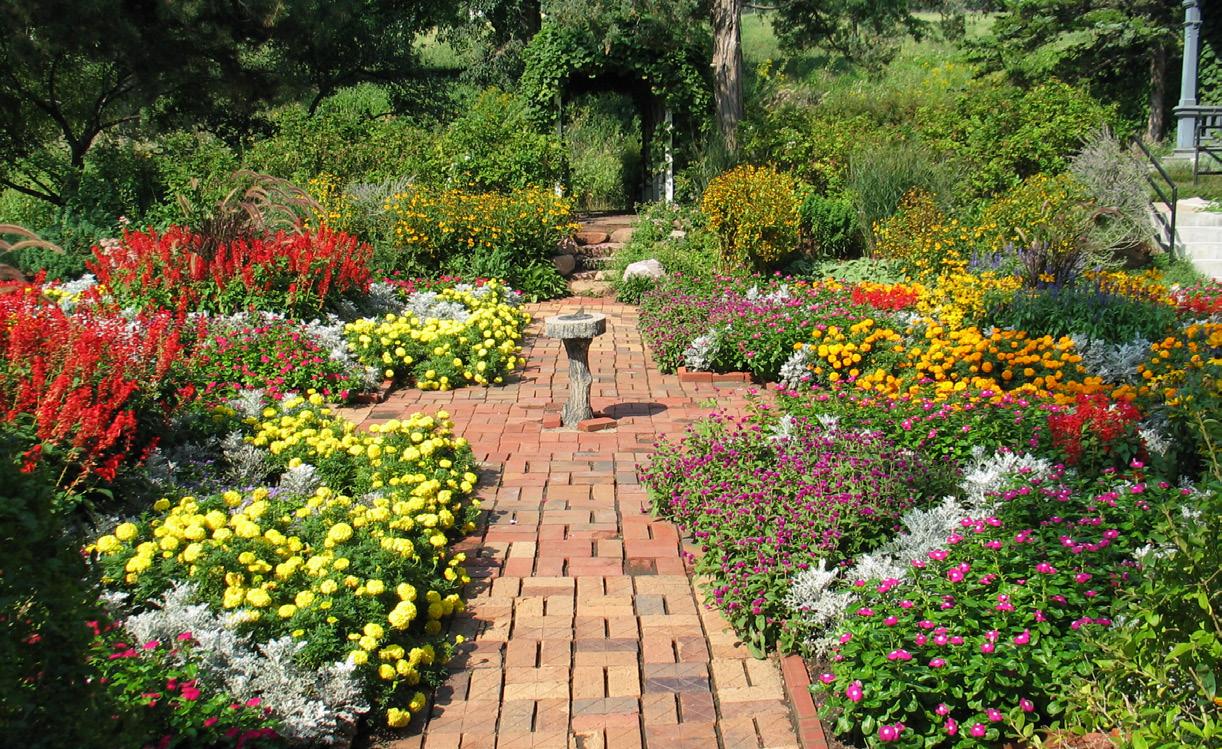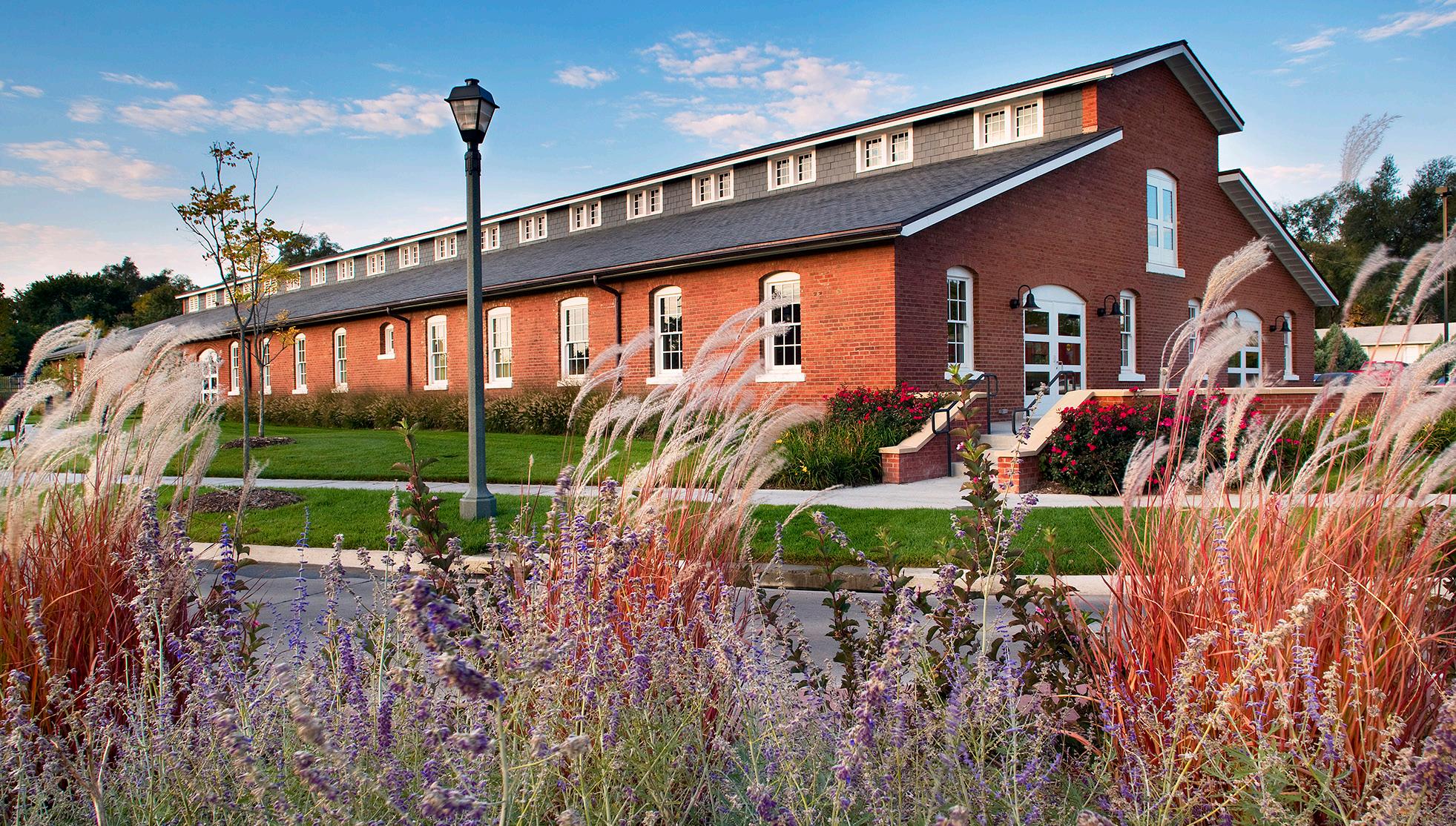
6 minute read
Ask the MCC Expert: Create a Pollinator Habitat in your Garden
Bustling with birds, bees and bugs, pollinator gardens breathe life into neighborhoods, transforming them into much more than a green space. Knowing what to plant and where, though, stops many from creating these efficient, beneficial spaces.
That’s where Kris Engler comes in.
Engler is an instructor in the Metropolitan Community College Horticulture, Land Systems and Management program who has spent 12 years teaching students about landscape design, sustainability and natural systems.
One of her passions is helping people transition from traditional turf lawns to designing biodiverse, native habitats, enhancing curb appeal and supporting essential pollinators — animal species that pollinate flowers.
As urban sprawl encroaches on natural landscapes, Engler said pollinators often struggle to find food and shelter. Pollinator gardens are purposefully designed to attract and support pollinators like bees, butterflies and other insects by integrating nectar- and pollen-rich plants. These plants sustain ecosystems and improve biodiversity.
“It’s important to have a pollinator garden because these plants will bring in the insects that will then pollinate the plants you want to harvest and grow fruits and vegetables,” Engler said. “When we think of pollinators, we typically think about cute, fuzzy bees, and those are an important part of the pollination system, but there are so many different pollinators out there that we need to support.”
Biodiversity is key to a healthy ecosystem, ensuring organisms have access to necessary food sources. Pollinators such as bees, wasps, butterflies, moths, flies, beetles and birds play a vital role in plant reproduction. Without them, many fruits, vegetables and flowers would struggle to grow.
“It’s so important because everything is part of a system,” Engler said. “It’s a giant web, and when we lose one piece of that web, everything can collapse.”
Historically, Nebraska has been a tallgrass prairie where native plants nourished pollinators. Modern landscaping prioritizes turf lawns, which do little to support wildlife. Engler encourages homeowners to plant native grasses and trees to help restore ecological balance and supply food sources for pollinators year-round.
“It can just be a small space to start with, and then you can grow from there,” Engler said. “Even that is going to help with the native plants, the native insects, the pollinators. Every little bit helps.”
Preparing a pollinator garden

When starting a garden, Engler said the first step is to assess the site conditions, including sun exposure, soil composition and drainage. Simple soil tests can determine whether the ground is clay-heavy, sandy or rich in silt, as each soil type affects drainage and plant suitability.
Gardeners should also consider their maintenance preferences when choosing plants. While native Nebraska plants require less care than non-native varieties, they still need regular watering and upkeep, particularly in their first year.
“Everything needs care that first year. But after the first year, once they’ve been established, usually there’s a lot less maintenance and care that goes into them,” Engler said.
Right plant, right place

Engler said the key to a successful pollinator garden is choosing the right plant for the right location. Planting for every season ensures a consistent food supply for pollinators migrating through or overwintering in Nebraska.
In the spring, Engler said she loves the pasque flower (Pulsatilla patens var. multifida), a purple bloom with a yellow interior. For summer, she recommends purple coneflowers (Echinacea purpurea), black-eyed Susans (Rudbeckia) and tickseed (Coreopsis), a vibrant yellow flower.
For fall, Engler favors the goldenrod (Solidago), Nebraska’s state flower. Often mistakenly blamed for allergies, it blooms at the same time as ragweed and is a critical late-season nectar source for bees. In winter, Engler suggests colorful native grasses such as little bluestem (Schizachyrium scoparium), switchgrass (Panicum) and Indian grass (Sorghastrum nutans), which are easy to maintain and well-adapted to the Nebraska climate.
“I love the native grasses,” Engler said. “They are gorgeous. They give you that winter interest, and they have a lot of texture. The movement in the fall is one of my favorites, too, when they catch the breeze and sway.”
Maintaining a pollinator garden

To nurture a garden site, Engler advises removing turf grass by covering it with plastic and mulch to smother growth. Measuring the area based on spacing requirements also gives plants enough room to thrive.
For best results, she recommends using plant plugs instead of seeds. Unlike native seed mixes, which tend to blow away and become bird or mice food, plugs establish more reliably and give clear indications of plant health. While they may cost more initially, they are a worthwhile long-term investment.
To prevent plants from dying out, Engler said gardeners should dig up native grasses every three to four years. Homeowners can divide the grasses by cutting through them with a shovel and replanting the sections throughout the garden in order to avoid overcrowding.
Beyond grasses, Engler said planting native trees like cherry or plum also support pollinators such as caterpillars and birds.
“I’m not saying don’t put out the bird feeder, but if you can plant a native to bring in those caterpillars and food sources, that’s going to be amazing,” Engler said.
Cultivating further knowledge
Engler encourages gardeners to explore local resources like the Nebraska Statewide Arboretum’s (NSA) “Bloom Box” program, which sells customized pollinator garden plans. In addition, NSA hosts spring plant sales and offers a Facebook group for Bloom Box participants.
Among other organizations and groups, enthusiasts can also join the Nebraska Extension Master Gardener Volunteer Program, which provides science-based horticulture education and volunteer opportunities.
“They basically will teach you everything about the home gardens, and then you put in volunteer hours to help other people learn,” Engler said, “so it’s a great organization to get involved in.”
Additionally, MCC offers credit and noncredit horticulture courses on native plants, perennial gardening and sustainable landscape design. Looking ahead, Engler is eager to expand these educational opportunities.
“We’re continuing to build,” Engler said, “so hopefully we’ll have a couple more classes that are geared towards pollinators and native plants, and how to get the most out of those.”
No matter the plot size, Engler said creating a native pollinator garden is a meaningful way to promote biodiversity.
“It’s so much fun,” Engler said. “It’s amazing to see all the different plants bloom and different insects coming in and the color. It doesn’t have to be huge. It can be a small area, but you can still have a lot of biodiversity there.”

